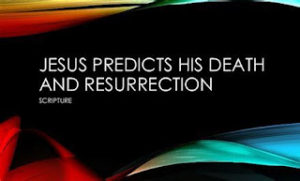Psalms – Any Messiah Prophecies?

Psalms are quoted in the New Testament more than any other book from the Old Testament, the Tenakh. Many Psalms include praises, songs, travails, and salvation; some describe characteristics of God; and others are considered to be parallels to the Messiah. The question is whether any of the Psalms are actual prophecies about the Messiah.[1]
Messiah prophecies have to be fulfilled by the one who claims to be the Messiah. If not, then either he is not the Messiah or they were not Messiah prophecies in the first place. Psalms identified by Jesus of Nazareth as prophecies to be fulfilled by himself raises the bar to the highest level – they must be fulfilled if his claim to be the Messiah is credible.[2]
MT: 5:17-18 “Do not think that I have come to abolish the law or the prophets; I have come not to abolish but to fulfill. For truly I tell you, until heaven and earth pass away, not one letter, not one stroke of a letter, will pass from the law until all is accomplished.” (NRSV) * [3]
Pharisees had been watching and listening to Jesus since early in his ministry. One day Jesus took an opportunity to engage them directly asking, “”What do you think of the Messiah? Whose son is he?”[4] Seemingly the question was simple and the Pharisees answered, “The son of David.” Jesus responded pointedly quoting from Psalms 110:1:
MT 22:45 “How then does David in the Spirit call Him ‘Lord,’ saying: ‘The LORD said to my Lord, “Sit at My right hand, Till I make Your enemies Your footstool’? If David then calls Him ‘Lord,’ how is He his Son?”(NKJV)
PS 110:1 ‘The LORD said to my Lord, “Sit at My right hand, Till I make Your enemies Your footstool”’? (NKJV)
No answer came from the Pharisees, according to Matthew. They were unable to explain the conundrum posed by Jesus from Psalms 110:1 – how could the Christ (Messiah) be the son of David when call David himself called him, ‘LORD’ (Jehovah)?
Judaism regards Psalms 118 as the concept of salvation pointing to the arrival of the Messiah recited in the Hallel during Festival holidays.[5] The Jewish Encyclopedia in it’s article entitled “Hosanna,” states Psalms 118 refers to “…the advent of the Messiah (see Midr. Teh. to Ps. cxviii. 17, 21, 22; comp. Matt. xxi. 42).”[6]
MT 21:42 Jesus said to them, “Have you never read in the Scriptures: ‘The stone which the builders rejected Has become the chief cornerstone. This was the LORD’S doing, And it is marvelous in our eyes’?” (NKJV)
PS 118:22-23 The stone which the builders rejected Has become the chief cornerstone.This was the LORD’S doing; It is marvelous in our eyes. (NKJV)
Jewish sage Rabbi Rashi viewed Micah 5:1(2) as a prophecy predicting the Messiah would be born in Bethlehem. In his phrase-by-phrase commentary of the Bethlehem prophecy, the Rabbi quoted from Psalms 118.22:
“from you shall emerge for Me the Messiah, [Rabbi Rashi:) son of David, and so Scripture says (Ps. 118:22): ‘The stone the builders had rejected became a cornerstone.”
Visiting Bethany just days before entering Jerusalem for the last time, oddly some Pharisees warned Jesus to watch out for Tetrarch Herod Antipas who wanted to kill him. Ignoring the warning, Jesus said he was busy casting out demons and performing cures, then finished with a prophecy quoting from Psalms 118:
LK 13:35 “I say to you, you shall not see Me until the time comes when you say, ‘Blessed is He who comes in the name of the LORD!’” (NKJV)
PS .118:26 “Blessed is he who comes in the name of the LORD! We have blessed you from the house of the LORD.” (NKJV)
Mere days later, Jesus rode into Jerusalem seated on the unbroken colt of a donkey while a crowd of people chanted and placed palm branches in his path.[7] All four Gospel authors write about that triumphal day:[8]
JN 12:12-13 “… a great multitude that had come to the feast, when they heard that Jesus was coming to Jerusalem, took branches of palm trees and went out to meet Him, and cried out: “Hosanna! ‘Blessed is He who comes in the name of the LORD!’ The King of Israel!””[9]
Teaching in the Temple just 3 days before he would be crucified, the Pharisees again questioned Jesus by what authority he was teaching. His answer included one of the few parables common to Matthew, Mark and Luke.[10]
Winery tenants who refused to pay rent, beat-up those sent to collect it, and stoned to death the owner’s only son when he personally attempted to collect the rent. Reaction by the Pharisee’s: “Bring those wretches to a wretched end!”[11] Jesus responded to them, first by quoting Psalms 118:22-23. The Pharisees became angry when they realized the Psalms and parable were about them.[12]
Passover meal became “The Last Supper” for Jesus and as they were eating, Jesus identified a prophecy soon to be fulfilled.[13] He quoted Psalm 41:9 as a prophecy of duplicity foretelling he was imminently to be betrayed by one of his own Disciples.[14]
JN 13:18-19 “I am not referring to all of you; I know those I have chosen. But this is to fulfil the scripture: ‘He who shares my bread has lifted up his heel against me.’ “I am telling you now before it happens, so that when it does happen you will believe that I am He. (NIV)
PS 41:9 Even my close friend, whom I trusted, he who shared my bread, has lifted up his heel against me. (NIV)
According to Jesus, the act of betrayal by Judas was predicted in the Psalms about himself and occurred shortly thereafter.[15] Once Judas Iscariot knew his illicit intentions were known by Jesus, he quickly left the Passover meal.
During his nighttime trial by the Jewish leaders, Jesus spoke only once. When he did, it was earth-shattering in more ways than one. Admitting he is the Messiah, again he referred to Psalms 110:1.[16]
MK 14:62 “‘I am,’ said Jesus, ‘and you will see the Son of Man sitting at the right hand of the Power and coming with the clouds of heaven.’”(NIV)
Psalms 22 is generally recognized by Christianity as either a foreshadowing or prophecy about the crucifixion of Jesus. The Psalm, written 1000 years earlier, describes agonizing physical and mental effects remarkably matching an execution by Roman crucifixion.
Two specific actions by others, mocking and gambling, are also described in Psalms 22.[17] According to all four Gospels, the mockers at the crucifixion spewed the same words found in Psalms 22 and the Romans cast lots for the clothes of Jesus.
Another quote from Psalms 22 occurred at the crucifixion. In his excruciating dying moments on the cross, Jesus quoted Psalms 22:1:
MK 15:34 And at the ninth hour Jesus cried out in a loud voice, “Eloi, Eloi, lama sabachthani?”— which means, “My God, my God, why have you forsaken me?”
PS 22:1 …“My God, my God, why have you forsaken me? Why are you so far from saving me, so far from the words of my groaning?” (NIV)
If specific Psalms about the Messiah all came true during the appearance of Jesus of Nazareth, are they then Messiah prophecies about him?
* Greek word nomos translated as “law” means “anything established, anything received by usage, a custom, a law, a command” i.e. the word includes the Law of Moses as well as other established customs or traditions.
Updated January 30, 2023.
This work is licensed under a Creative Commons Attribution-NonCommercial-NoDerivatives 4.0 International License.
REFERENCES:
[1] “44 Prophecies Jesus Christ Fulfilled.” Roman Catholic Church of St Thomas More, Swiss Cottage. n.d. <https://parish.rcdow.org.uk/swisscottage/wp-content/uploads/sites/52/2014/11/44-Prophecies-Jesus-Christ-Fulfilled.pdf> Kranz, Jeffrey. “Which Old Testament Book Did Jesus Quote Most?” 2014. <http://blog.biblia.com/2014/04/which-old-testament-book-did-jesus-quote-most> Morales. L. Michael “Jesus and the Psalms.” TheGospelCoalition.org. 2011. <https://www.thegospelcoalition.org/article/jesus-and-the-psalms> Wilson, Ralph F. “10. Psalms: Looking Forward to the Messiah.” (Psalms 2, 110, and 22).” JesusWalk.com. 2020. <http://www.jesuswalk.com/psalms/psalms-10-messianic.htm> Rochford, James M. Evidence Unseen. The Psalms. image. n.d. <https://www.evidenceunseen.com/wp-content/uploads/2019/09/psalminternet-1024×538.jpg> “Hallel.” MyJewishLearning.com. 2020. <https://www.myjewishlearning.com/article/hallel>
[2] Luke 24:44.
[3] “nomos <3551>.” Greek text. Net.Bible.org. 2020. <http://classic.net.bible.org/strong.php?id=3551> “G3551” LexiconConcordance.com. n.d. <http://lexiconcordance.com/greek/3551.html>
[4] NET, NIV, NASB, NRSV, NKJV. NetBible.org. Greek text. <http://classic.net.bible.org/verse.php?book=Mat&chapter=22&verse=42> Lexicon-Concordance Online Bible. n.d. <http://lexiconcordance.com/greek/5547.html>
[5] “Psalms 118.” JewwishAwareness.org. 2011. <http://www.jewishawareness.org/psalm-118> McKelvey, Michael G. “The Messianic Nature of Psalm 118.” Reformed Faith & Practice. 2017. <https://journal.rts.edu/article/messianic-nature-psalm-118> “Hallel” EncyclopædiaBritannica. 2020. <https://www.britannica.com/topic/Hallel>
[6] “Hosanna.” Jewish Encyclopedia. <http://jewishencyclopedia.com/articles/7893-hosanna> CR Mark 12:11; Luke 20:17.
[7] “Hosanna.” Jewish Encyclopedia. 2011. <http://jewishencyclopedia.com/articles/7893-hosanna>
[8] CR Matthew 21:2-11; Mark 11:1-11; Luke 19:28-40; John 12:12-16.
[9] NKJV.
[10] Matthew 21:33-41; Mark 12:1-12; Luke 20:9-19
[11] Matthew 21:42. NIV, NASB.
[12] Matthew 21:46.
[13] Matthew 26:17-19; Mark 14:12-16; Luke 22:7-20; John 13:1-3.
[14] CR Matthew 26:21-25; Mark 14:17-21; Luke 22:21-23.
[15] Matthew 26:46-56; Mark 14:42-52; Luke 22:47-53; John 18:1-11a.
[16] Mark 14:62. CR Matthew 26:64. Luke 22:69-70.
[17] Psalms 22:8, 18; Matthew 27:41-42, 46; Mark 15:24, 31, 34; Luke 23:35-37; John 19:24. Zugibe, Frederick T. “Turin Lecture: Forensic and Clinical Knowledge of the Practice of Crucifixion.” E-Forensic Medicine. 2005. <http://web.archive.org/web/20130925103021/http://e-forensicmedicine.net/Turin2000.htm>
Preview ChangesPreview ChangesPreview Changes (opens in a new tab) (opens in a new tab) (opens in a new tab)

 First of the third-day
First of the third-day 
